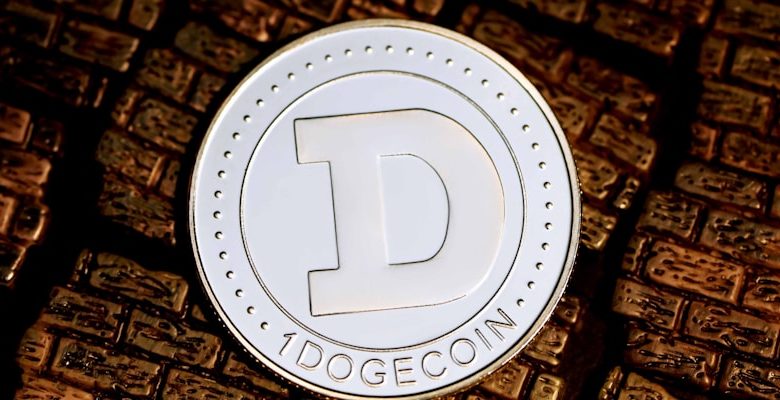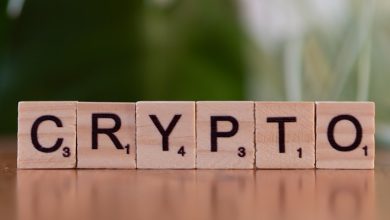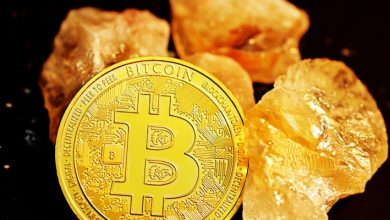The Basics of DeFi: A Guide to Decentralized Finance

- Understanding the concept of decentralized finance
- Exploring the benefits of DeFi
- Key components of the DeFi ecosystem
- Risks and challenges in decentralized finance
- How to get started with DeFi
- The future of decentralized finance
Understanding the concept of decentralized finance
Decentralized finance, or DeFi, is a concept that is gaining traction in the world of finance. It refers to the use of blockchain technology and cryptocurrencies to create financial services that operate independently of traditional financial institutions. In simple terms, DeFi aims to eliminate the need for intermediaries such as banks and brokers, allowing users to transact directly with one another.
One of the key principles of DeFi is the idea of decentralization. This means that there is no central authority controlling the system; instead, decisions are made collectively by the community of users. This not only reduces the risk of censorship and fraud but also promotes transparency and trust among participants.
Another important aspect of DeFi is the concept of smart contracts. These are self-executing contracts with the terms of the agreement directly written into code. Smart contracts enable transactions to be carried out automatically when certain conditions are met, eliminating the need for intermediaries and reducing the risk of human error.
Overall, decentralized finance offers a new way of thinking about financial services, one that is more inclusive, transparent, and efficient. By leveraging blockchain technology and cryptocurrencies, DeFi has the potential to revolutionize the way we access and manage our finances, providing greater control and autonomy to users.
Exploring the benefits of DeFi
Exploring the advantages of DeFi, or decentralized finance, can provide a glimpse into the future of the financial industry. DeFi offers a wide array of benefits that traditional centralized finance cannot match. One of the key benefits of DeFi is its accessibility. Anyone with an internet connection can participate in DeFi, allowing for financial inclusion on a global scale.
Another advantage of DeFi is the transparency it offers. Transactions on the blockchain are visible to anyone, providing a level of trust that is often lacking in traditional finance. Additionally, DeFi eliminates the need for intermediaries, reducing costs and increasing efficiency. Smart contracts automate processes that would typically require human intervention, making transactions faster and more reliable.
Furthermore, DeFi allows for greater control over one’s finances. Users have full ownership of their assets and can interact with them directly, without relying on third parties. This level of control is empowering and can lead to greater financial independence. DeFi also opens up new opportunities for earning passive income through activities such as lending, borrowing, and staking.
Key components of the DeFi ecosystem
The key components of the DeFi ecosystem include various decentralized applications (dApps), smart contracts, liquidity pools, and decentralized exchanges (DEXs). These components work together to enable users to engage in a wide range of financial activities without the need for traditional intermediaries.
Decentralized applications (dApps) are at the core of the DeFi ecosystem, offering users access to a variety of financial services such as lending, borrowing, trading, and asset management. These dApps are built on blockchain technology and operate autonomously through smart contracts, which are self-executing contracts with the terms of the agreement directly written into code.
Liquidity pools play a crucial role in the DeFi ecosystem by providing the necessary funds for trading and lending activities. Users can contribute their assets to these pools in exchange for a share of the fees generated by the platform. This system allows for greater flexibility and efficiency compared to traditional financial markets.
Decentralized exchanges (DEXs) are platforms that facilitate the exchange of digital assets without the need for a central authority. These exchanges operate using smart contracts to match buyers and sellers, ensuring secure and transparent transactions. DEXs offer users greater control over their funds and lower fees compared to centralized exchanges.
Overall, the key components of the DeFi ecosystem work together to create a more inclusive, transparent, and efficient financial system. By leveraging blockchain technology and decentralized networks, users can access a wide range of financial services with greater autonomy and security.
Risks and challenges in decentralized finance
While decentralized finance (DeFi) offers numerous benefits, it also comes with its fair share of risks and challenges that users should be aware of. One of the main risks of DeFi is smart contract vulnerabilities, which can lead to hacks and funds being stolen. It is crucial for users to thoroughly research the smart contracts they are interacting with and to only use platforms that have been audited by reputable firms.
Another risk in DeFi is the volatility of the cryptocurrency market. Prices can fluctuate wildly in a short period, leading to significant losses for investors. It is important for users to be aware of this risk and to only invest what they can afford to lose. Additionally, regulatory uncertainty is a challenge for DeFi, as governments around the world are still figuring out how to regulate this new form of finance. Users should stay informed about the latest regulations in their jurisdiction to avoid any legal issues.
Furthermore, the lack of customer support in DeFi platforms can be a challenge for users. Since transactions are decentralized, there is no central authority to turn to for help in case of issues. Users should be prepared to troubleshoot problems on their own or seek help from online communities. Lastly, the risk of liquidity shortages in DeFi protocols can impact users’ ability to access their funds when needed. It is important for users to diversify their investments across different protocols to mitigate this risk.
In conclusion, while DeFi offers exciting opportunities for financial innovation, it is essential for users to be aware of the risks and challenges involved. By conducting thorough research, staying informed about regulations, and being prepared for potential issues, users can navigate the world of decentralized finance more safely and confidently.
How to get started with DeFi
To get started with DeFi, the first step is to set up a digital wallet. This will allow you to store, send, and receive cryptocurrencies securely. You can choose from a variety of wallets, including hardware wallets, software wallets, and mobile wallets. Once you have selected a wallet, you will need to fund it with cryptocurrency. You can do this by purchasing cryptocurrency from a reputable exchange or transferring it from another wallet.
The next step is to familiarize yourself with decentralized exchanges (DEXs). These platforms allow you to trade cryptocurrencies directly with other users, without the need for a centralized intermediary. Some popular DEXs include Uniswap, SushiSwap, and PancakeSwap. Before using a DEX, it is important to understand how it works and familiarize yourself with the different features and trading pairs available.
After getting comfortable with DEXs, you may want to explore decentralized lending and borrowing platforms. These platforms allow you to earn interest on your cryptocurrency holdings by lending them to other users, or to borrow cryptocurrency by using your own holdings as collateral. Popular decentralized lending platforms include Aave, Compound, and MakerDAO. Before participating in lending or borrowing, make sure to understand the risks involved and do your own research.
In addition to trading and lending, decentralized finance also encompasses other applications such as decentralized insurance, prediction markets, and asset management. By exploring these different DeFi applications, you can gain a better understanding of the possibilities and potential of decentralized finance. Keep in mind that the DeFi space is constantly evolving, so it is important to stay informed and be cautious when participating in new projects or platforms.
The future of decentralized finance
The future of decentralized finance (DeFi) looks promising as more individuals and institutions are starting to recognize the benefits of this innovative financial system. DeFi has the potential to revolutionize traditional finance by providing greater accessibility, transparency, and efficiency. With the rise of blockchain technology, DeFi platforms offer users the ability to participate in various financial activities such as lending, borrowing, trading, and earning interest without the need for traditional intermediaries.
As DeFi continues to gain traction, we can expect to see more innovative projects and applications emerge in the space. Developers are constantly exploring new ways to enhance DeFi protocols and make them more user-friendly. Additionally, as regulatory frameworks around the world evolve to accommodate DeFi, we may see increased adoption from mainstream financial institutions and investors.
One of the key advantages of DeFi is its decentralized nature, which reduces the risk of censorship and third-party interference. This gives users greater control over their assets and financial activities. Furthermore, DeFi protocols are often open-source, allowing for greater collaboration and innovation within the community.



